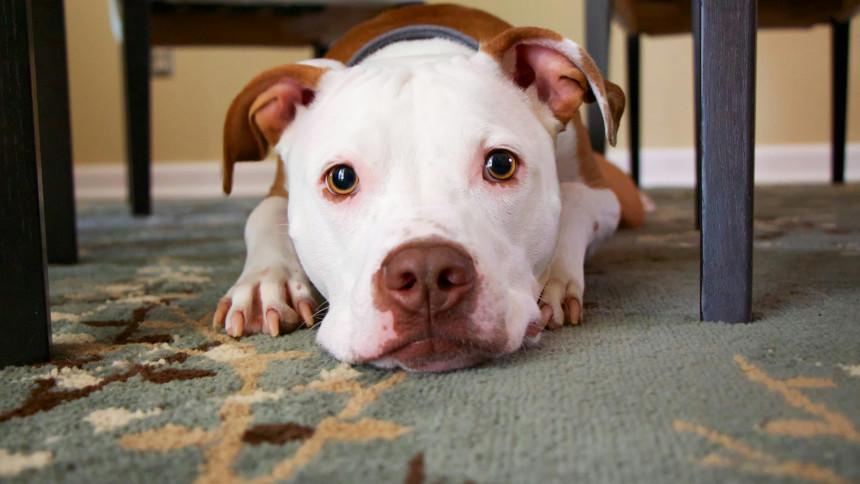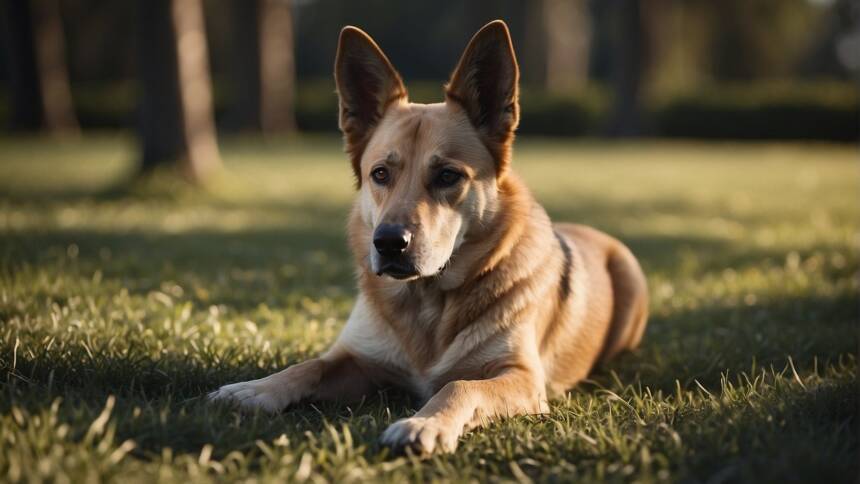When an older dog starts to resist going outside, it can be perplexing and concerning for pet owners. This change in behavior may stem from a variety of reasons, some of which are common among aging canines. As dogs grow older, they may experience a decline in their sensory capabilities, mobility issues, and even a change in their emotional well-being. These factors can make the once enjoyable experience of stepping out into the yard or going for a walk less appealing, or even stressful for elderly pets.
Resistance to going outside might be an indication that the dog is facing health challenges such as joint pain, decreased vision, or other age-related conditions that make outdoor activities difficult. Furthermore, psychological factors such as anxiety or fear, possibly exacerbated by a decrease in socialization or negative experiences, could also cause an older dog to become hesitant to venture out. Understanding these potential causes is crucial for pet owners to address their dog’s needs effectively and ensure their comfort and well-being.
Pet guardians should observe their dog’s behavior closely and consider factors like weather conditions—extreme cold, heat, or storms—which may dissuade an older dog from leaving the house. Seeking veterinary advice is a prudent step to rule out any medical issues and to gain tailored advice for alleviating any discomfort the dog may experience. With patience and appropriate care, it is often possible to manage these issues and help an elderly dog to once again find joy in the outdoors.
Understanding Age-Related Changes in Dogs
As dogs enter their senior years, they often experience challenges that affect their daily activities. Recognizing these can help in managing an older dog’s hesitation to go outside.
Cognitive Decline and Dementia
Senior dogs may develop canine cognitive dysfunction (CCD), which is similar to dementia in humans. Symptoms of CCD can include disorientation and changes in interactions with family members. Cognitive decline affects a dog’s ability to process information and can make familiar environments seem unfamiliar and intimidating.
Sensory Impairments
Hearing loss and vision problems like cataracts or glaucoma are common in older dogs. These sensory impairments can make an otherwise familiar outdoor setting seem daunting. For instance, a dog suffering from cataracts may have blurry vision or decreased vision at night, which can lead to reluctance in going outside.
Mobility Issues
Conditions such as arthritis and hip dysplasia are prevalent in senior dogs, causing discomfort and pain that can limit their mobility. Dogs with joint pain may resist walking or going outside due to the potential for increased discomfort. Regular, gentle exercise can aid in maintaining mobility, but environmental modifications may be needed to encourage an older dog to go outside.
Identifying the Root Causes of Avoidance
When an older dog shows reluctance to go outside, it’s crucial to determine why. This involves observing specific behaviors and physical symptoms to pinpoint pain, fear, or past negative experiences.
Pain or Illness
Pain or discomfort can significantly alter an older dog’s willingness to venture outdoors. Conditions such as arthritis or other joint issues cause stiffness and soreness, making movement difficult. Veterinarian consultation is key in identifying ailments like ear infections, dental disease, or internal illnesses, which can also lead to avoidance behaviors.
Fear and Anxiety
Fear and anxiety play major roles in an older dog’s avoidance of the outdoors. Loud noises, such as thunderstorms, or even the presence of another animal, can produce stress. A dog’s behavior such as hesitance at the door or hiding are clear indicators of fear. Anxiety, particularly in senior dogs, can have various triggers that may not be immediately apparent.
Negative Experiences
An older dog may associate going outside with negative experiences. Traumatic events like altercations with other animals, past punishments, or even an electric fence incident can create lasting negative associations. These experiences can evoke stress and result in the dog avoiding the outdoors to prevent a recurrence of the negative occurrence.
Behavioral and Psychological Factors
Behavior changes in older dogs can be closely tied to psychological issues such as stress, anxiety, and cognitive decline. Understanding these factors helps in addressing the underlying causes of a dog’s reluctance to go outside.
Stress and Anxiety Triggers
Older dogs frequently experience heightened stress and anxiety, which can be prompted by various environmental factors. Such triggers may include:
- Noise Phobias: Fear of thunderstorms or loud noises can lead to anxiety.
- New Environments: Hesitance to enter unfamiliar spaces or walk on different surfaces.
Solutions and Adaptations:
- Create a Safe Space: A dedicated area where the dog can feel secure.
- Desensitization: Gradual exposure to stressors to reduce fear response.
Learning and Memory Issues
Senior dogs often display memory lapses and a decline in cognitive function. Symptoms can include:
- Disorientation: Difficulty in navigating familiar environments.
- Learning Challenges: Struggles with retaining new commands or routines.
It’s paramount to practice patience and maintain a consistent routine to reduce disorientation and assist in retaining learned behaviors.
Adapting the Walking Routine to Your Older Dog
For older dogs, maintaining a regular walking routine is essential for their health, but adjustments may be needed to match their changing abilities and comfort levels.
Creating Positive Associations
To make walks more enticing, owners can create positive associations with the act of going outside. Introducing treats or toys that the dog values can be effective. For instance, giving a small healthy treat right before and after a walk can encourage a dog to look forward to this activity. Additionally, associating walks with a favorite toy can help build excitement. Desensitization techniques, such as spending short, pleasant moments outside, can gradually help in reducing any reluctance or fear associated with going out.
- Treats: Offer before/after walks
- Toys: Introduce a favorite toy during the walk
- Desensitization: Start with brief periods outside
Adjusting Exercise Expectations
When dealing with an older dog, it’s crucial to adjust exercise expectations. Shorter walks and gentler terrains should be considered to support their aging joints. Owners should be attentive to their dog’s endurance levels and recognize signs of fatigue or discomfort. A slow introduction to new walking routines is important, building up the duration and intensity of exercise as the dog shows comfort and ability. Support your pet by choosing the best time of day for their walk, when they are most alert and the temperature is comfortable.
- Shorter Walks: Limit the distance based on the dog’s comfort
- Gentle Terrain: Avoid challenging surfaces that may cause discomfort
- Support: Consider the dog’s energy levels and environmental factors such as weather
By taking these measures, the dog can still enjoy and benefit from regular walks, with a routine that is tailored to their specific needs as they age.
Managing Health Issues and Treatment
When an older dog shows reluctance to go outside, it may be indicative of underlying health issues. Effective management revolves around professional veterinary care for accurate diagnosis and appropriate treatment through medication or supplements.
Veterinary Care and Diagnosis
A veterinarian’s evaluation is the first step in addressing an older dog’s hesitation to go outside. Diseases such as arthritis or hip dysplasia, which cause pain and mobility problems, or cognitive dysfunction, can lead to such behavior. The veterinarian will perform a physical examination and may recommend diagnostics like x-rays or blood tests to identify the specific issue.
Medication and Supplements
Once diagnosed, the veterinarian may prescribe medication to manage pain or other symptoms associated with the dog’s condition. For instance, anti-inflammatory drugs are commonly used to alleviate discomfort due to arthritis. In addition to medications, supplements like glucosamine and chondroitin can be beneficial in supporting joint health and can potentially improve mobility issues stemming from hip dysplasia. Supplements aimed at enhancing cognitive function may be recommended for dogs showing signs of cognitive decline.
- Common Medications:
- Nonsteroidal Anti-Inflammatory Drugs (NSAIDs)
- Pain relievers
- Cognitive enhancers
- Helpful Supplements:
- Glucosamine
- Chondroitin
- Omega-3 fatty acids
A comprehensive treatment plan should be tailored to the dog’s specific needs and closely monitored for effectiveness and any potential side effects.
Environmental and External Factors
In older dogs, environmental and external factors play a significant role in their willingness to venture outside. They may become more sensitive to changes and stimuli that they previously tolerated.
Weather and Temperature
Older dogs are particularly sensitive to weather and temperature changes. Extreme heat can cause discomfort and potentially lead to heatstroke, especially in dogs with thick coats or underlying health conditions. Conversely, cold weather might exacerbate joint pain, commonly seen in dogs with arthritis, making them reluctant to go outside.
- Sensitive to heat:
- Limit exposure during peak sunshine hours.
- Provide plenty of water and shade.
- Sensitive to cold:
- Shorten walks in cold weather.
- Consider dog-appropriate clothing, like sweaters or coats.
Noise and Unfamiliar Stimuli
Noise and unfamiliar stimuli can provoke anxiety, especially as a dog ages. Sudden sounds, such as thunder from a storm or loud vehicles, can be distressing. Additionally, dogs may develop a heightened response to unfamiliar noises and weather conditions, making them hesitant to leave a safe and familiar environment.
- Response to noise:
- Provide a quiet, safe space during noisy events.
- Desensitization techniques may help reduce noise anxiety.
- Unfamiliar stimuli:
- Gradual introduction to new sounds and environments.
- Maintain a routine to provide stability and reduce stress.
Helping Your Dog Adapt to New Situations
When an older dog is hesitant about going outside, it’s crucial to gently help them become comfortable with new environments and changes. Ensuring that they feel secure and at ease during this process can greatly aid in their willingness to venture outdoors.
Moving to a New Home
Moving to a new home can be unsettling for an older dog. To help them adjust, maintain a consistent routine that includes regular walks and feeding times. Coaxing them with treats and favorite toys can make the transition less stressful. Allow them to explore the new space at their own pace, starting with a safe area and gradually increasing their range. It’s vital to avoid overwhelming them with too many new stimuli at once. Instead, introduce sights and smells gradually, perhaps starting in a quiet room before exploring the whole house.
- Routine: Stick to a familiar schedule.
- Safe Space: Designate a comfortable spot just for them.
- Gradual Introduction: Slowly acquaint your dog with different areas.
Introducing New Elements
Older dogs may also need time to adapt to new elements in their environment. For instance, if you’re introducing booties for the first time to protect their sensitive paws or to prevent digging, have them wear these in the house before venturing outside. When dealing with garbage or other intriguing but off-limits items outside, redirect their attention with commands or treats. Introduce one new aspect at a time to avoid overstimulation.
- Booties: Familiarize indoors, then outside.
- Digging Prevention: Use positive reinforcement when they refrain from digging.
- Garbage Training: Keep them focused with consistent commands or treats.
By taking a methodical and patient approach, you can help your elderly dog gracefully adjust to their new surroundings and routines.
When to Seek Professional Help
It’s essential for dog owners to monitor their aging companions closely and recognize when professional assistance is necessary. Sudden behavioral shifts or signs of aggression can indicate underlying health issues, while certain physical symptoms may necessitate immediate veterinary attention.
Behavioral Changes and Aggression
- Behavioral Changes: When an older dog shows significant changes in behavior, such as increased fearfulness or unexplained aggression, it’s a sign that they could be experiencing pain, discomfort, or cognitive decline. Owners should observe and note any specific triggers or patterns in behavior.
- Aggression: A previously gentle dog displaying aggressive behaviors, especially if sudden and unprovoked, might be reacting to internal pain or the confusion caused by cognitive issues, such as brain tumors. Professional evaluation can decipher these changes and provide appropriate management strategies.
Serious Health Concerns
- Pain or Illness: Lethargy or reluctance to engage in regular outdoor activities can be a symptom of illnesses, including joint pain or arthritis. Persistent signs of discomfort warrant a visit to the veterinarian for a thorough check-up.
- Injuries: If an injury is causing a dog to avoid going outside, swift veterinary intervention can alleviate pain and prevent complications.
- Brain Tumors: Although less common, behavior alterations in older dogs can stem from serious conditions like brain tumors. These require immediate professional diagnosis and treatment.
Each of these scenarios justifies a consultation with a veterinarian to ensure the well-being of the canine and to rule out or confirm any serious health conditions.








